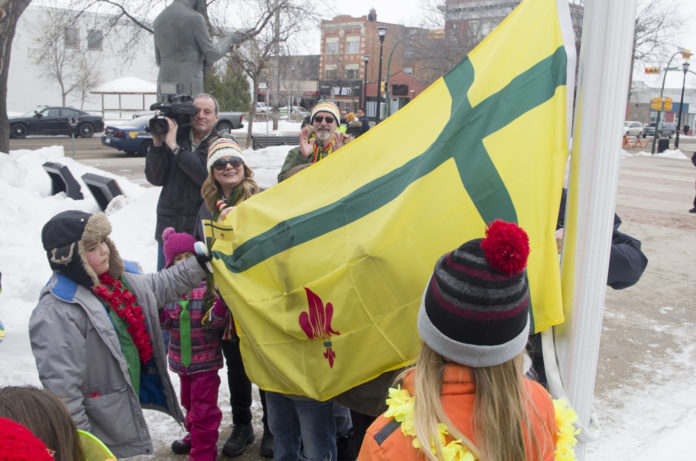
The number of bilingual youth is on the rise, according to data from Statistics Canada, and that’s led to the highest number of bilingual Canadians in the country’s history
In 2016, nearly 18 per cent of Canadians reported they could hold a Conversation in both English and French, the highest percentage ever in Canada, and the increase in bilingualism among youth was a big part of that. In 2016, roughly 19 per cent of Canadians between the ages of five and 17 could hold a conversation in both English and French, a three per cent increase from 2006.
That’s no surprise to Tom Michaud, the superintendent of schools for Saskatchewan Rivers Public School District, who said there’s been a steady increase in demand for French language education, and that’s led in increased levels of bilingualism among children and teenagers.
“We’re seeing it and I guess you could say we’re hearing it as well too, seeing as how we’re talking about a second language,” Michaud explained. “Our numbers in French Immersion have been increasing steadily over the last few years.”
Sask. Rivers did a 10 year review of French language education while preparing to introduce French Immersion programming to École Arthur Pechey Public School. That review showed the number of French Immersion students in the public school system had doubled over the past decade, from roughly 300 students to nearly 700.
Michaud said there are multiple reasons for the increase, including the large number of immigrant families arriving from Francophone countries. However, a large number of non-bilingual families have started to enrol their children after seeing the positive benefits, and that’s lead to more and more bilingual youth.
“When you look at what our world is like today, from the perspective of our future citizens and leaders, there are no boundaries when it comes to communications across the planet,” Michaud said. “Families are wanting to prepare their children for that reality.”
In the future, Michaud expects more and more parents to make sure their children can speak a second language, although that second language may be Indigenous instead of French.
While the number of bilingual youth is increasing, retention rates outside of Quebec are not strong. Of all Quebec youth who spoke both English and French in 2006, roughly 94 per cent were still bilingual in 2016.
However, only 65 per cent of bilingual youth in the rest of the country could still speak two languages just 10 years later. The retention rate was particularly low among youth whose families were less educated, low income, non-bilingual, or who lived in a region with a low francophone population.
Estelle Hjertaas, a board member with the Société Canadienne-Française de Prince Albert (SCFPA), said she’s not surprised to hear so many adults failing to retain a second language. Hjertaas is bilingual and comes from a francophone family, but many of her old bilingual classmates struggled to retain their language skills after leaving high school.
“So many of my friends who went through (French) immersion, I would say, are not able to functionally speak French anymore,” she said. “If they were exposed to it, they could drudge it back up, but yes that does happen.”
The SCFPA has introduced a number of programs and events to help adults retain their French language skills, the biggest being Tintamarre, a traditional francophone celebration held annually in March.
Hjertaas said those events are proactive ways to keep French in everyday life, something that’s necessary in a city where English is the most widely spoken language.
“When I lived in Quebec for a decade it was pretty easy to speak French on a daily basis, even if I was working in English,” she explained. “It’s a little harder when you’re working in English, and the dominant world is in English around you, to maintain that exposure. It’s just normal. Most of us, not everyone, but most of us who grew up here would be bilingual if we were francophone as well. It’s easier sometimes to take the path of least resistance and just speak English because that includes the largest number of people around you.”
Hjertaas said governments to support French-language services and education programs, however she believes grassroots organizations like the SCFPA still fill a vital role.
“That (government support) is part of it, and the other part is to have an active organization on the ground that’s creating opportunities for people to live in French and speak in French as much as possible in a minority situation, and I think that we’re increasingly doing that,” she said. “In the years that I’ve lived in Prince Albert I’d say that we’re doing more than we ever have before.”

